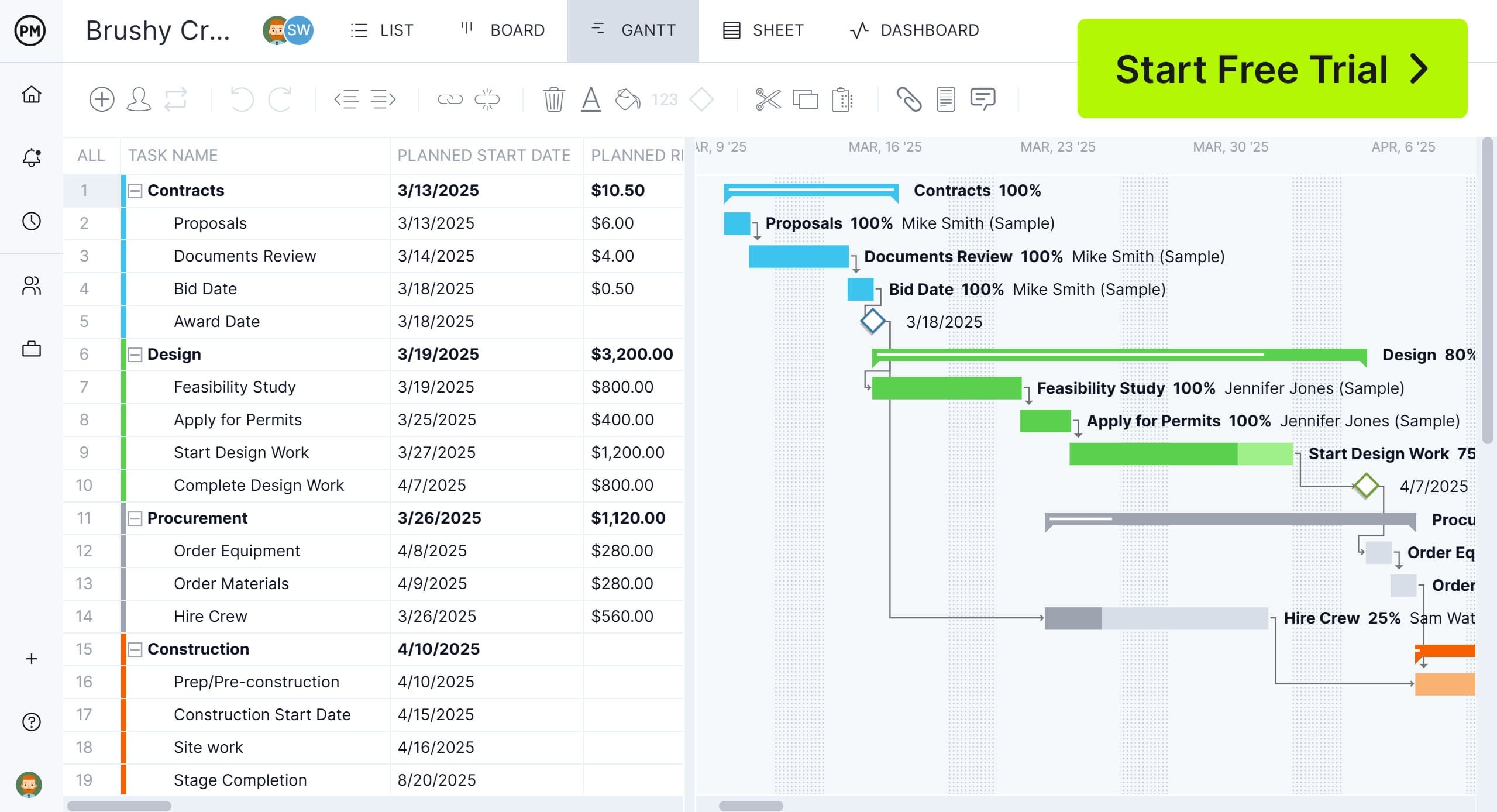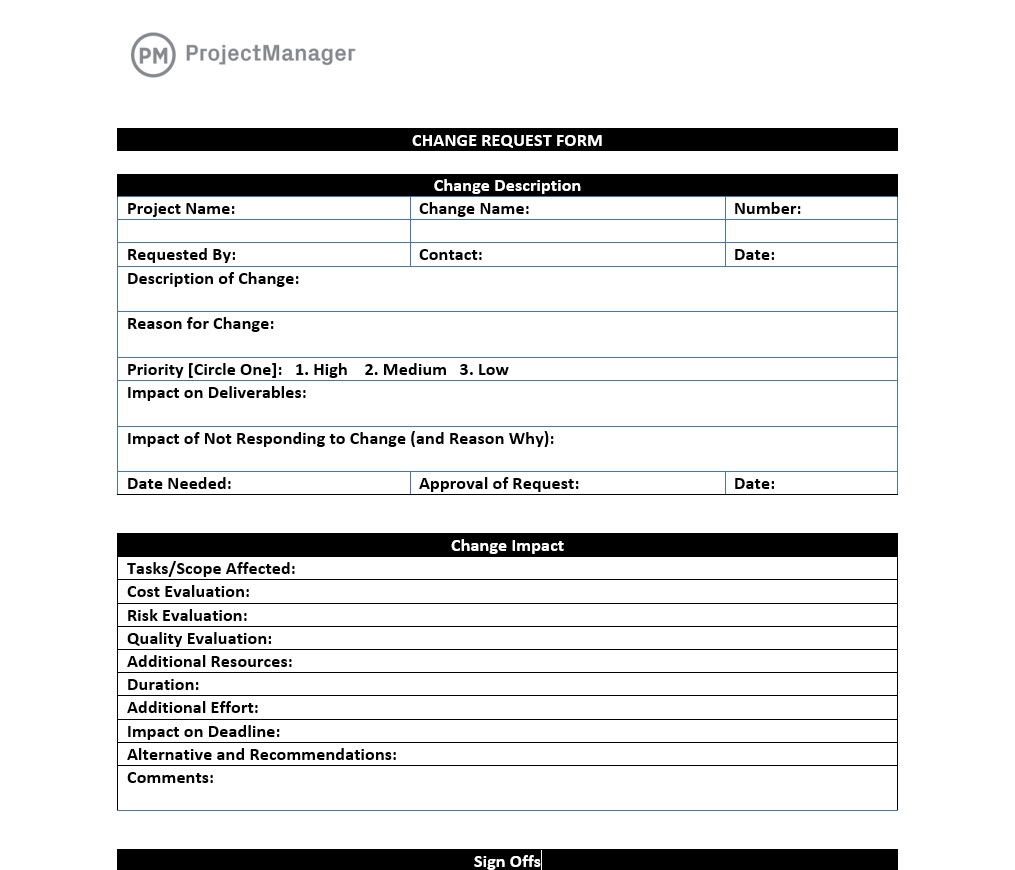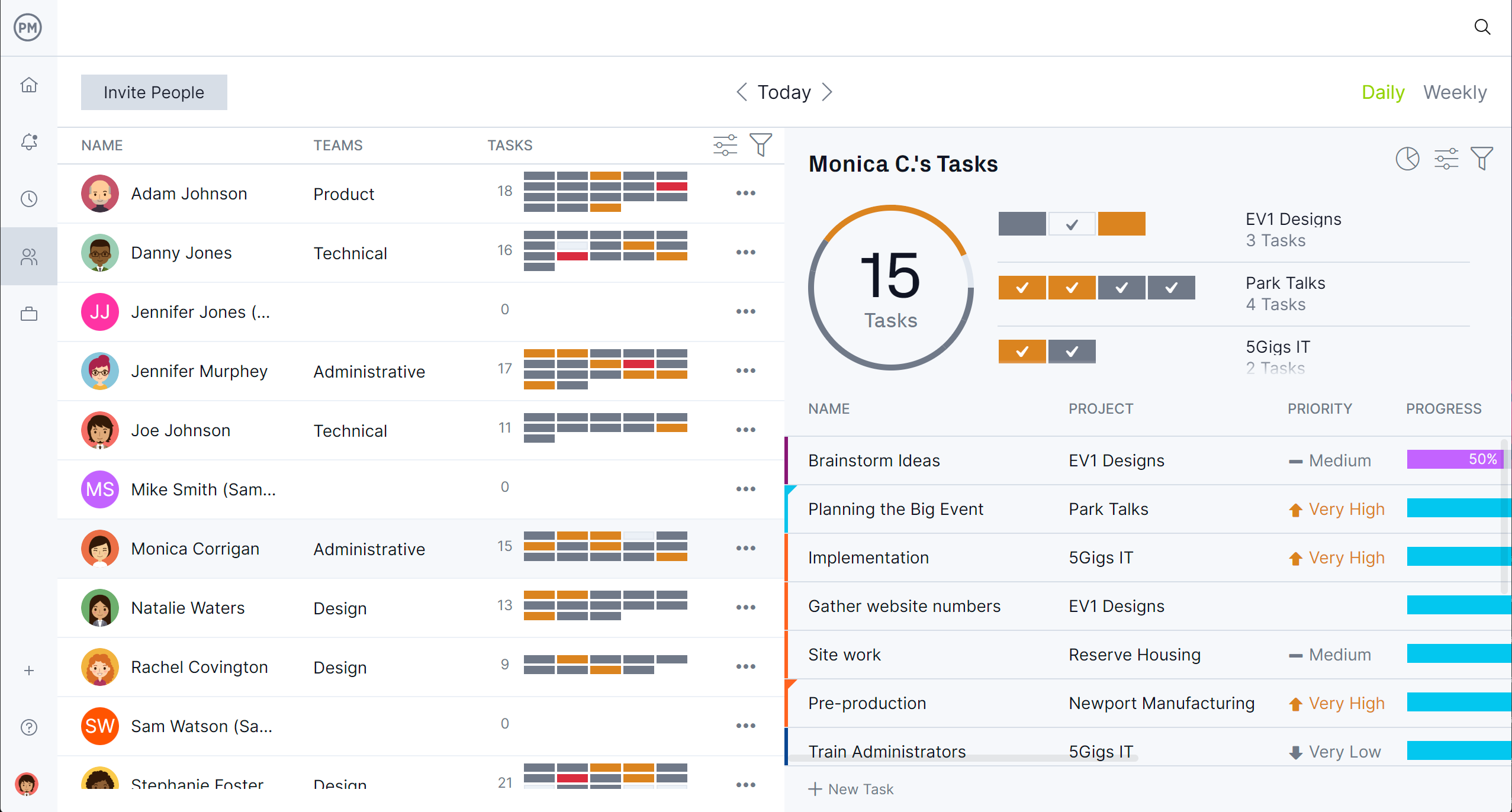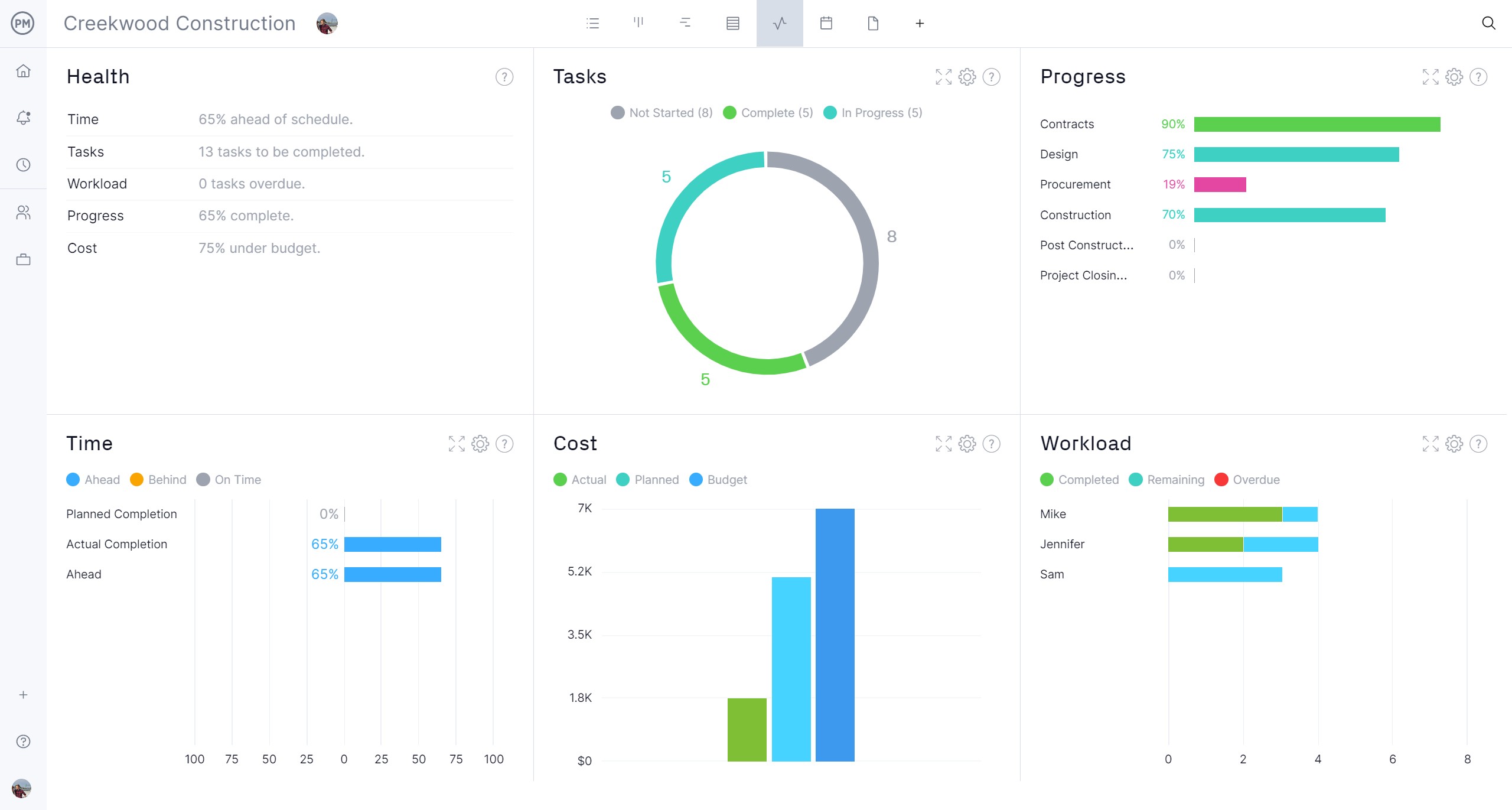There’s a change order process to manage when there are requests for something new or altered in a construction project. A variation order is also instrumental in managing change. This is especially important in construction, where the project often undergoes many changes.
What is a variation order? We’ll define the term and explain when to use one and who requests and approves it. Then we’ll break down the components of variation orders and illustrate how they work in a real-life situation by providing an illustrated example.
What Is a Variation Order?
A variation order is a formal document issued to modify the original contract terms, typically concerning the scope of work, materials, design or project timeline. Variations may arise due to design changes, unforeseen site conditions or client requests.
The variation order outlines the changes, their impact on the project cost and schedule, and is agreed upon by both the contractor and client before implementation. It ensures clear communication and proper documentation of adjustments to prevent disputes.
Project management software can help with managing variation orders. ProjectManager is award-winning project and portfolio management software with robust Gantt charts that visually represent the project timeline, tasks, dependencies and milestones, which can be used to assess the impact of variation order on the project schedule and resources.
Project managers can quickly identify which dependent tasks may be delayed and estimate how the overall completion date will be impacted, including additional resources that may be required. Our Gantt chart links all four types of task dependencies, filters for the critical path and can set a baseline to monitor progress in real time and make sure the additional tasks are completed on schedule. Get started with ProjectManager today for free.

When to Use a Variation Order
A variation order should be used in a construction project when there’s a need to formally change the terms of the original contract. This includes any adjustments to the scope of work, design, materials, costs, timelines or other contractual obligations. Here are common scenarios when a variation order is necessary.
Design or Scope Changes
- The client requests additional features or modifications to the original design.
- Errors, omissions or ambiguities in the design are discovered that require clarification or adjustments.
- The contractor suggests improvements that could enhance quality, reduce costs or improve efficiency.
Site Conditions and Unforeseen Issues
- Unexpected site conditions are encountered, such as poor soil quality, underground utilities or archaeological findings.
- Environmental factors like flooding, landslides or weather damage affect construction progress.
Regulatory or Compliance Changes
- New regulations, safety standards or building codes are introduced after the project begins.
- Inspection authorities require changes to meet compliance requirements.
Material or Equipment Substitutions
- Specified materials are unavailable, and alternative materials need to be used.
- Equipment specified in the contract is no longer suitable due to unforeseen conditions.
Time Extensions or Delays
- Project delays occur due to factors beyond the contractor’s control, such as adverse weather, supply chain disruptions or labor shortages.
- A variation order can formalize a time extension to adjust project timelines.
Budget Adjustments
- Changes in labor or material costs may require a re-evaluation of the budget.
- Additional work or unforeseen conditions may result in increased costs that need client approval.
Client or Stakeholder Requests
- Clients may change their preferences mid-project, asking for aesthetic modifications or functional adjustments.
- Stakeholders might request changes to accommodate business needs or operational improvements.
Who Requests a Variation Order
Different parties involved in a construction project can request a variation order, depending on the situation. The most common roles requesting a variation order include the following.
Client or Project Owner
- The client may request a variation order to make design changes, add new features or adjust project requirements.
- They might also request changes due to evolving business needs, regulatory updates or aesthetic preferences.
Contractor
- The contractor may identify unforeseen site conditions, such as poor soil or hidden utilities, that require additional work or changes to the construction plan.
- They may also propose variations to improve constructability, reduce costs or meet safety requirements.
Architect or Designer
- Architects or designers may request a variation order if they identify design flaws, omissions or discrepancies in the project drawings or specifications.
- They may also suggest modifications to enhance functionality or aesthetics.
Engineer
- Structural, civil or MEP (mechanical, electrical and plumbing) engineers may request changes due to technical issues, unforeseen site conditions or changes in material availability.
- They may also recommend variations to ensure structural integrity and compliance with regulations.
Project Manager or Consultant
- The project manager may identify the need for a variation order to mitigate delays, reallocate resources or address issues affecting project timelines.
- Consultants responsible for quality assurance or regulatory compliance may also suggest changes.
Regulatory Authorities
- In some cases, building inspectors or regulatory agencies may require changes to meet updated codes, safety standards or environmental regulations.
Who Approves a Variation Order?
A variation order is typically approved by the party or parties with contractual authority over the project. The approval process ensures that the proposed changes are justified, budgeted and aligned with the project’s goals. The key individuals or entities that may approve a variation order include the following.
Client or Project Owner
- The primary approver in most cases, since they are responsible for funding the project.
- The client evaluates the financial and timeline impacts before approving.
- They may involve their legal or financial advisors for larger variations.
Project Manager
- Often plays a role in reviewing the variation order for feasibility, cost-effectiveness and its impact on the project schedule.
- While they may not have the final authority, they provide recommendations to the client.
Contractor
- May need to approve the variation order if it affects their contractual obligations, timelines or resource management.
- In some cases, the contractor might also negotiate for adjustments in payment or schedule.
Architect or Designer
- Approves variations that involve design changes to ensure the changes align with architectural intent and building codes.
- Provides technical input regarding the feasibility of the proposed changes.
Engineer
- If the variation order involves structural or technical modifications, the engineer must assess the impact on safety, stability and compliance with engineering standards.
Quantity Surveyor or Cost Consultant
- Reviews the financial impact of the variation order, ensuring accurate cost estimates are provided before approval.
Regulatory Authorities (If Necessary)
- For variations that affect safety standards, zoning regulations or building codes, the relevant regulatory authority may need to approve the changes.
What Should Be Included in a Variation Order?
A variation order is a formal document to request and approve changes to a construction project’s original contract. It serves as an essential record of any adjustments in scope, timeline or budget. To ensure clarity and transparency, a well-structured variation order should include the following elements.
Project Details
Provide basic information about the project, including:
- Project name and location
- Contract number or reference
- Client’s and contractor’s names
- Date of the variation order
This ensures all parties can easily reference the correct project and context.
Description of Change
- Clearly outline the nature of the variation.
- Specify what is being added, removed or modified, including details about materials, design or scope.
- Explain the reason for the change, whether it’s due to client requests, unforeseen site conditions or regulatory requirements.
Change Impact
Provide a detailed analysis of how the variation will affect the project’s:
- Cost: Estimate any additional costs or cost savings.
- Time: Specify any changes to the project schedule, including revised milestones or completion dates.
- Resources: Indicate if extra labor, materials, or equipment will be required.
This section ensures that stakeholders understand the full impact of the change.
Signatures
Include designated spaces for signatures from key stakeholders, typically:
- Client or project owner
- Contractor or subcontractor
- Project manager or consultant
The signed approval formalizes acceptance of the variation order.
Supporting Documents
Attach any relevant documentation to provide additional context or justification, such as:
- Revised drawings or blueprints
- Cost estimates or quotations
- Schedules and timelines
- Correspondence or meeting notes
Supporting documents ensure that all details are accurately recorded and accessible for future reference.
By including these elements, a variation order becomes a clear, comprehensive document that facilitates effective communication and decision-making in construction projects.
Variation Order Example
To better understand what a variation order is, let’s look at how it works in a real-life scenario. For example, a change order for a construction project that consists of adding additional parking spaces to an apartment complex.
Change Description
| Field | Details |
| Project Name | Sunrise Apartment Complex |
| Change Name | Additional Parking Lot Expansion |
| Number | CO-2025-001 |
| Requested By | John Smith (Client Representative) |
| Contact | [email protected] |
| Date | March 14, 2025 |
| Description of Change | The original design included 50 parking spaces. Due to increased tenant demand, an additional 25 spaces need to be added. This requires extending the parking area and modifying drainage. |
| Reason for Change | Increased tenant requests and revised city zoning recommendations for parking space minimums. |
Change Impact
| Field | Details |
| Tasks/Scope Affected | Earthwork, grading, and drainage installation, Asphalt paving and line marking, Electrical wiring for additional lighting, Landscaping adjustments |
| Cost Evaluation | Estimated Additional Cost: $120,000, Revised Total Project Budget: $5,620,000 |
| Risk Evaluation | Potential delays in paving due to weather conditions, Increased material procurement lead time, Budget overrun if additional changes arise |
Sign Offs
| Field | Details |
| Decision | 1. Accepted (Circle One: 1. Accepted 2. Deferred 3. Rejected 4. More Info Requested) |
| Comments | Approved with phased expansion recommendation, Budget reallocation required for added cost |
| Project Manager Signature | John Doe |
| Date | March 15, 2025 |
| Decision Maker Signature | Sarah Lee (Senior Executive) |
| Date | March 16, 2025 |
The above charts illustrate how a variation order would be done in the construction of additional parking spaces in an apartment complex.
Variation Order Template
To help with the variation order process, download this free change request form template for Word, which is another way to describe a variation order.

This is an essential part of the change management process and helps to make sure the change is thoroughly and smoothly implemented.
Related Construction Project Management Templates
A variation order template is one of over 100 free project management templates for Excel and Word that can be downloaded from our site. They cover all aspects of managing a project across multiple industries. Below are a few that are related to the change management process.
Change Management Plan Template
Download this free change management plan template for Word to outline how changes will be identified, assessed, approved and implemented within a project. It serves as a guide for managing both anticipated and unexpected changes, ensuring minimal disruption to the project’s progress.
Change Impact Assessment Template
Use this free change impact assessment template for Excel to evaluate the potential effects of a proposed change on a project. It helps stakeholders understand how the change will impact various aspects of the project, including time, cost, resources and overall objectives. This template is often used as part of the change management process to make informed decisions before approving or rejecting a change request.
Change Log Template
A change log is a spreadsheet used to track and manage changes in a project. Download this free change log template for Excel to provide a clear and organized way to document details about change requests, their status and their impact on the project. Using this free template makes it easy to filter, sort and analyze data, ensuring that all changes are properly monitored and managed.
How ProjectManager Helps With Change Management
Change management is too dynamic to depend on static templates to manage implementation into construction projects. Construction crews need tools that don’t have to be manually updated and can provide a more collaborative environment. That’s why they choose construction project management software. ProjectManager is award-winning project and portfolio construction management software that allows project managers to track, assess and implement changes systematically while maintaining control over timeline, budgets and resources.
Manage Tasks and Resources Effectively
After a change is approved, new tasks can be assigned to team members with deadlines and priorities. Because their availability has been set when onboarded and human and nonhuman resources are scheduled on the Gantt chart, project managers can ensure the right people and materials are there to make the assigned changes.
Workload charts show resource allocation across one or multiple projects, so it’s easy to see who is overallocated or underutilized. The team’s workload can be balanced to keep them all working at capacity without causing burnout. There’s also a team page to get a daily or weekly summary of team activity, which can be filtered by progress or priority and tasks updated without leaving the page.

View Impact Assessment With Real-Time Dashboards and Reporting
There are many ways to see how changes are impacting the schedule, budget and more. For a high-level overview, toggle to the real-time project or portfolio dashboards. They automatically collect live data and display it on easy-to-read graphs and charts that display time, cost, workload and more.
For a closer look, use customizable reports on status, variance, workload timesheets and more. Each can be filtered to focus on key data points or provide a more general view of progress, which can then be shared with stakeholders. Secure timesheets can track labor costs to help stay on budget.

Related Change Management Management Content
A variation order is a crucial but small part of the larger change management process. For those who want to learn more about the topic, below are some more recent pieces we’ve published on our blog about change management principles, processes, plans and more.
- What Is Change Management? Principles, Process & Models
- How to Make a Change Management Plan
- How to Make a Change Management Communication Plan
- What Is Change Control in Project Management?
- Change Impact Assessment & Analysis
ProjectManager is online project and portfolio construction management software that connects teams whether they’re in the office or on the job site. They can share files, comment at the task level and stay updated with email and in-app notifications. Get started with ProjectManager today for free.



